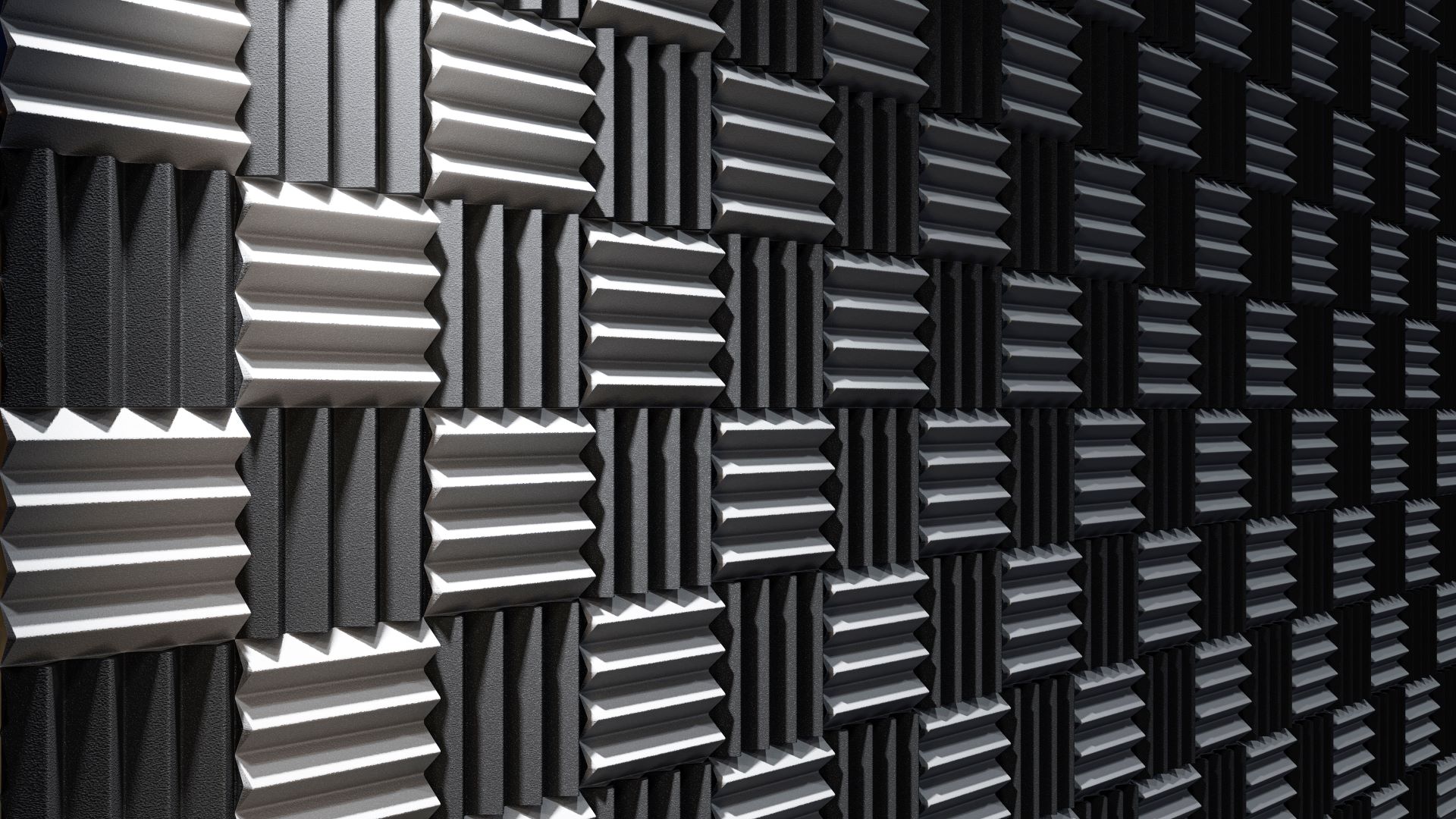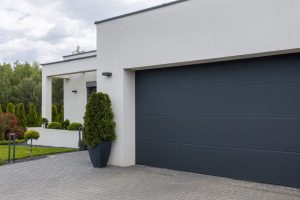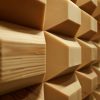The Science Behind Soundproofing: How Materials Affect Acoustics
As the world population grows and cities become more tightly packed, soundproofing is becoming more and more important. Reducing our exposure to the noise pollution sneaking into our lives as a result of this societal growth is important for both our physical and mental wellbeing.
For years, soundproofing was relegated to the realm of nightclubs and professional music recording studios. However, as more and more of us engage in home workshop and studio soundproofing to keep the neighbors happy, it’s creeping into the vocabulary of the general public.
Once you understand the science behind soundproofing, it’s easy to see where sound issues originate from, as well as how to tackle them. Sealing your indoor spaces against sound can deliver added peace that both soothes our souls and protects our hearing against long term damage. Let’s look at the basic science behind soundproofing and how you can achieve quieter spaces for yourself.
What is sound?
Every sound we hear is created by pressure waves traveling through space. Our ears act as receivers, and as those pressure waves reach our eardrums, the vibrational energy is converted into electrical signals by the structures in the inner ear and are translated by our brains as sound.
When the waves interact with solid structures like walls, floors, and ceilings, that vibrational energy can work its way through the surface and reappear on the other side. Absorbing these waves and preventing their passage through walls, floors and ceilings are the factors that form the basis of the science behind soundproofing.
The science behind soundproofing: Why indoor sound builds in intensity
Sound waves travel through space and in the case of indoor spaces, eventually encounter surfaces. When they strike hard, reflective surfaces, they bounce back into the room. If those waves are confined to the room, they can contribute to audio issues like echo and reverberation.
Echo
The vast majority of us are familiar with the phenomenon of echo. Some person or thing creates a sound, which travels across a space, and is reflected back toward the source. The result is an audible repetition of the original sound. The length of the delay is directly related to the distance the sound travels before reflecting back. Too much echo can cause issues communicating and contribute to a more hectic audible atmosphere.
Echo only occurs because the surface those waves strike is very reflective, returning much of the energy back to the source. If we introduce soft, absorptive materials anywhere in the space between, the chance of experiencing echo is reduced.
Reverberation
When we are in an enclosed space, the echo that returns will most likely strike another wall and be reflected back in the same direction as the original sound wave. As those sound waves are reflected back and forth off of walls, floors, and ceilings, the pressure builds. Consequently, the sound created by those pressure waves increases in volume. This is known as reverberation.
The more pronounced the reverberation in any space, the more important it is to implement some kind of soundproofing measures. The advanced acoustical materials used in the process of acoustical treatments not only absorb sounds to keep the overall volume down, but they prevent that vibrational energy from passing through walls and ceilings into the next room or outdoor spaces.
The science behind soundproofing: Sources of sound
There are two primary sources of sound you can expect to encounter in any situation. They are airborne and impact noise. Each presents its own set of challenges when soundproofing against them. As few environments are prone to one and immune from the other, a well-rounded soundproofing plan is always recommended. Here is a quick overview of the science behind soundproofing against each type.
Airborne noise
Airborne noise is the type that originates somewhere other than the structure. When we converse, listen to music, and shuffle papers around on our desks, we are creating airborne noise. We use acoustical materials to absorb and trap these sound waves to take them out of the equation. When they are excessively loud, we rely on soundproofing materials to keep them contained.
Impact noise
Impact noise, on the other hand, is created by the impacts of one surface against another. Keyboard clacking, moving furniture, and noisy upstairs neighbors stomping around are all examples of impact noise. Much of this sound travels through the surfaces that created it, and requires the addition of mass and density to the structure, as well as sound damping materials to eliminate it.
The science behind soundproofing: How sound traverses structures
When soundproofing any space, the main goal is to prevent the passage of sound pressure from inside the room to the outside, or vice versa. There are a number of pathways sound can use from one side to the other, and the science behind soundproofing is centered around removing those pathways. These are the main routes sound waves utilize:
- Gaps and cracks – The easiest way for sound waves to traverse a wall is when there is nothing there to stop it. If the structure has gaps or cracks that can allow air to pass through, sound can easily pass through as well. In the absence of serious structural damage, the most common place we encounter gaps and cracks are in the frames around windows and doors.
- Direct pathways – When sound waves encounter any surface, some percentage of that vibrational energy is transferred directly into the surface. When there are no gaps in that surface, the vibrations are able to pass all the way through and push sound waves out the other side.
- Reverberation inside walls or ceilings – Even if we create gaps that eliminate direct pathways, sound waves can reverberate off cavities within the wall. In order to combat this, we must introduce an absorptive material capable of damping sound waves into the empty space. The go-to material for this use case is acoustical insulation.
The science behind soundproofing: Soundproofing Materials
Now that you understand a little more about the science behind soundproofing, including types of sounds and how they traverse structures, it’s time to go over some of the more popular and effective soundproofing solutions on the market today.
Acoustic Materials
The first thing we’ll look at is acoustic materials. These soft, porous materials allow sound to enter and become trapped in them. This prevents the audio reflections that cause echo and reverberation, which left unchecked, can increase the volume in the space. They act as both architectural elements and acoustics improving elements.
Acoustic Panels
One of the most popular options is acoustic panels. These decorative panels can be placed anywhere sound reflections run rampant, and provide a simple way to improve home and office acoustics, as well as lower indoor volume.
They are available in a range of materials and finishes, meaning you can find a solution that fits your design scheme with little effort. You can even print directly onto the fabric, giving you a simple way to increase your branding efforts.
Ceiling clouds
Just like the acoustic panels we hang on walls, ceiling clouds absorb and trap sound waves. Suspending them from your ceiling delivers a couple benefits that their wall-mounted counterparts don’t.
First, they give you some sound protection from overhead sources. Whether that means upstairs neighbors or overhead mechanical, electrical, and plumbing (MEP) systems, ceiling clouds can absorb them before they reach the people below.
Diffusers
This type of acoustic treatment doesn’t absorb sound waves, but provides another benefit that’s essential to great sound. Diffusers present a variety of different angled surfaces into the room, allowing sound waves to disperse on reflection rather than returning directly to the source. This prevents those endless cycles of reflections that directly contribute to echo and reverberation.
Options for adding mass and density
Mass and density and sound transmission are all directly related when it comes to soundproofing science. The more mass and density we have in our walls and ceilings, the harder it is for sound waves to pass through. It’s not always possible to replace walls with cinder blocks or brick, so we turn to products created specifically for this purpose.
MLV
Mass loaded vinyl, or MLV, is sold in rolls that can easily be applied to wall, ceiling, and floor structures. It’s loaded with mass and density, greatly improving barrier performance when it comes to soundproofing. It’s generally applied to the studs prior to hanging drywall, or sandwiched between two layers of drywall.
Heavier doors and windows
Doors and windows aren’t the type of surface we can simply roll MLV onto, so we take a different approach with each. For doors, replacing thin doors with something more substantial will go a long way. The heavier your doors, the more likely they will be able to keep sound at bay. If the door has windows, you’ll want to make sure they are up to par.
Windows are generally treated in one of two ways. First, you can replace them. If they are old and only contain single panes of glass, it’s time to do something about them. Choosing double or triple paned windows gives you extra stopping power through multiple surfaces with an air or gas gap between them. New windows can be costly, however, so window inserts are another great option for soundproofing windows.
Window inserts fit tightly into the window frame, adding an additional pane and air gap to your existing windows. This greatly improves their performance and allows you to keep your vintage windows, if that’s what you’re after.
Sound Damping Materials
For impact sounds and airborne sounds loud enough to pass through solid surfaces, we use sound damping materials. Sound damping materials convert vibrational energy into a small amount of heat energy, allowing it to dissipate into the surface. Since energy cannot be created or destroyed, this transformation is necessary to eliminate that vibrational energy. We’ve got some great materials to take this on for you.
Green Glue
Green glue is a type of compound that is typically spread between two surfaces, such as drywall or plywood. When sound waves strike the visible layer, the green glue between it and the next wall layer damps and prevents vibrations from transferring from one surface to the next. This provides a valuable barrier to sound transfer, and is a great option in soundproofing for homes and offices.
Acoustical Insulation
Another sound damping product that plays an important role in keeping sound contained is acoustical insulation. It is very similar to the standard insulation we use to thermally seal homes and offices, but it has an added benefit. This is insulation for sound absorption and heat retention.
The fibers in acoustical insulation damp sound waves. This prevents any reverb from occurring in the spaces between joists or studs, and greatly improves the wall or ceiling’s ability to block sound. Since it pulls double duty by insulating for heat as well as sound, this is an energy efficient soundproofing material that delivers big results.
Sealing gaps and cracks
No matter which materials you choose, they won’t perform the way you want them to if you’ve got open gaps and cracks that provide pathways between one side of the barrier and the other. Seal any gaps and cracks with acoustical caulk to finish the job.
Acoustical caulk is made of latex, rather than the silicone that’s most common in other types, and that allows it to remain permanently flexible. As walls expand and contract during extreme weather, things can shift, and your caulking can crack or break free of the surface. Either of these events will decrease the room’s soundproofing ability. Acoustical caulk is a perfect solution that will deliver for years.
When it comes to the gaps around doors, a door seal kit will likely deliver the results you want. They are designed to seal all gaps without interfering with normal door operation. A seal kit with an automatic door sweep is your best option. These door sweeps automatically raise and lower, providing a perfect seal without dragging on the floor when you open and close the door.
Additional material considerations
Sometimes a soundproofing project comes with specific demands. Some spaces require environment specific soundproofing materials to stand up to high humidity or slow the spread of any potential fires. With these considerations in mind, there are some materials that perform exceptionally well.
Microperforated Panels
Microperforated panels offer acoustic performance in a fire resistant package. Choosing metal microperf panels allows us to trap a decent number of sound waves without increasing flammability. Microperforated panels are available in nearly any style you want, from high end veneers to whimsical prints, meaning they are suitable for nearly any instance. They are also easy to clean, which makes them a perfect solution for high touch spaces or rooms that regularly house children or animals.
Natural soundproofing materials
If chemical exposure is high on your list of things to avoid, there are a number of natural soundproofing materials that improve your acoustics and don’t contribute any toxic chemicals to the equation.
Wood wool is made of wood shavings and cement. These natural materials are safe even when children and animals are near, and they are incredibly sustainable. They can be painted to fit nearly any design scheme, and add a unique texture to any space.
The science behind soundproofing: Professional materials work best
Your soundproofing project will only be as impactful as the materials we choose to use. That’s because the science behind soundproofing tells us that building materials and sound absorption are directly related. Cheap, DIY acoustic materials will deliver some benefits, but quality materials deliver vastly more. Working with a reputable soundproofing house will ensure you have access to all the materials and expertise you need to get the job done right.


















Add comment
You must be logged in to post a comment.